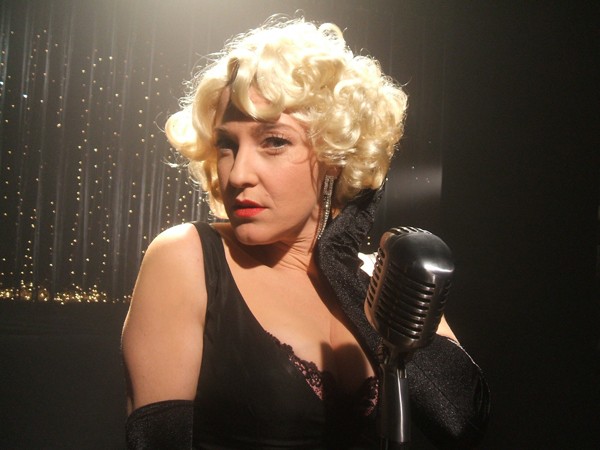
A musical number from MARY LOU (Film Society of Lincoln Center)
The lives of creative Jews—actors, singers, dancers, and more—are the insightful highlights of the program’s 21st edition, presented by the Jewish Museum and the Film Society of Lincoln Center (January 11 – 26). The most unusual selection is Mary Lou, a moving four-episode TV musical miniseries that exuberantly uses the songs of 1970s Israeli pop star Svika Pick. (He cameos as an Idol-type judge, looking a lot like Gene Simmons of Kiss.) The heartfelt script by Shiri Artzi, daughter of another popular singer/songwriter, Shlomo Artzi, is more than just a jukeboxical, even with its Mamma Mia-like story of a search for a parent and identity. Director Eytan Fox overcomes the clichés of being gay in the Israeli army and in Tel Aviv that mired his 2006 film The Bubble through the fun music, more rounded characters, and especially the wonderful talent: Ido Rosenberg as the bullied gay teen Meir; Maya Dagan as his adored, missing mother; hunky Alon Levin as Gabriel, the crush of both Meir and his childhood Best Friend Forever Shuli (Dana Frider); Yedidya Vital as the fragile Uri, whose alter ego “Miss Sunshine” inducts them into the city’s nightlife; and the real drag queen cabaret troupe the Holy Wigs. Though Fox hadn’t seen the comparable Glee before this production, fans of the American TV series will be a sure-fire audience.
Lea and Darija is based on a real-life musical story, the lives of two late 1930s child stars: brunette and Jewish Lea Deutsch (played by the charming Klara Naka), “the Croatian Shirley Temple,” and her blonde best friend and tap dancing partner Darija Gasteiger (Tamy Zajec), an ethnic German. A counterpoint to the irresistible performances is the off-stage poignancy of artists who thought their popularity and talent would protect them from the political changes outside as they try ever desperate measures to keep performing and then to survive—pro forma Catholic conversion, Lea’s paper marriage to a helpful Aryan fan, and reaching out to partisans. While the story is a bit confusingly told through the elderly Darija’s memories, the lure of musical theater as an escapist fantasy takes a touching turn into magic realism when Lea’s doomed transport to Auschwitz is transformed into a final stage number.
“The Jewish Caruso” was another singer whose fame was dashed by the Holocaust. The diminutive tenor Joseph Schmidt is seen and, even more importantly, gloriously heard in the revival of My Song Goes Round the World, Richard Oswald’s sweet, back stage romantic 1933 melodrama. Though set in Venice, there are biographical parallels to Schmidt’s rise from his native Romania to the great halls, radio waves, and movie studios of the world. Full-bodied singers (past and present) who chose the synagogue over the secular stage are featured in 100 Voices: A Journey Home, where directors Danny Gold and Matthew Asner followed a hundred cantors (male and female) to performances in Poland, including at an annual Jewish music festival. The documentary spends as much time on the resonance for several as they searched for their family roots while they restored a living tradition back to its homeland.
Restoration uses the artistry of craftsmanship and a vintage piano for a beautifully sensitive metaphor of generational conflict and change. In an old downtown Tel Aviv neighborhood full of colorful characters, surly Fidelman (Sasson Gabai, internationally recognizable from 2007’s The Band’s Visit) has to face the death in flagrante delicto of his longtime partner in their furniture restoration business at the same time a mysterious, handsome young stranger, Anton (Henry David), drifts in to apprentice. Nose to antiques, Fidelman was oblivious to the financial problems (let alone his partner’s liaison) that his son Noah wants to solve by selling the property. Anton finds in the dusty workshop not only the beauty in a neglected old Steinway, that could save the business, but Noah’s lovely, neglected, pregnant wife Hava (Sarah Adler). Their relationship could destroy the family. With surprising and involving twists and turns, the emphasis is more on quiet ironies than definitive resolutions.
A moving performance by the great Israeli actress, the expressive Ronit Elkabetz, anchors The Flood, the opening night presentation that is a highlight of Jewish film festivals around the country this year. She plays Miri, the matriarch of the Roshko family who runs a nursery school. After work, she trysts with a lover, and is oblivious to her pot smoking husband’s unemployment and her puny son’s nervousness over his upcoming bar mitzvah. The Torah portion he’s learning to chant is about Noah and the flood, and her past floods the family when the institution caring for her older autistic son shuts down and she has to bring him home. The wrenchingly realistic portrayal of a mother overwhelmed by the difficulties of caring for a low-functioning autistic young adult reaches a touching shore for her whole family.
The documentaries on creative artists not only uncover fascinating biographies but raise awareness and appreciation of their oeuvres. Incessant Visions: Letters from an Architect intimately reveals the peripatetic life and stunning work of Erich Mendelsohn, supplemented by readings from the memoirs by his cellist wife Louise. From the tiny sketches for a new modern architecture that he sent to her from the trenches of World War I, he went on to design an astronomical observatory for Einstein (his wife’s chamber music partner). Mendelsohn went on to become a popular architect of department stores, theaters, and factories in Germany (mostly for Jewish owners)—he was so busy and controlling that his wife left him for an affair with a Communist poet. Since she always managed his practice and correspondence—his eyesight was compromised by a war injury—he wooed her back with a Berlin house he designed to every furnished detail (perfect for hosting soirees with artist friends like Wassily Kandinsky). They lived there until his expulsion from the architectural association cued them to flee. (His sleek, modernist gem of a community center in England still starkly stands out from a Victorian neighborhood; he boasted that as long as he had a pencil, he had an office.)
Zionist leader Chaim Weizmann recruited him to create a new national architectural style for Israel through large-scale, institutional commissions, but Mendelsohn ended up frustrated that the European refugee intelligentsia instead imitated his German avant-garde work in the world’s largest enclave of Bauhaus residences, now disappearing in Tel Aviv redevelopment. Illustrating with the voluminous records that the widow saved, director Duki Dror hunted down Mendelsohn’s works on three continents (including his “German Village” practice bomb site for the U.S. War Department), finding international architecture tourist fans and preservationists who are enthusiastic about restoring his still-striking buildings of curved glass and metal.
Iraq ‘N’ Roll tracks charismatic Israeli rock musician Dudu Tassa’s search for his musical heritage and how he creatively channels the past through his contemporary beats. In 1930s Iraq, his grandfather Salah al-Kuwaiti led a popular and honored band with his brother, featuring traditional Iraqi instruments in a modern style. But when Mizrahi Jews were forced to leave Arab countries for Israel in the 1950s, they faced an Israeli culture dominated by Ashkenazi European Jews, who ignored their life’s work, restricting their performances to small ethnic showcases. Embittered, the brothers stopped playing music and banned it from their family altogether. Director Gili Gaon follows the very engaging and talented Tassa as he thrills to discover archives of his family’s musical history. The excerpts of the lively performance of his reinterpretations stirs immediate interest for his resulting album Dudu Tassa & the Kuwaitis.
In Joann Sfar Draws from Memory, which world premieres at the festival, director Sam Ball follows the voluble creator of popular French graphic novels and the director of the recent Gainsbourg: A Heroic Life to his favorite neighborhood inspirations, from his Mediterranean hometown to Parisian cafés (complete with tips of what to look for in a good drawing-from-life location). Sfar talks, while constantly sketching everyone around him, about his artistic process and the influences of his (paternal) Algerian and (maternal) Eastern European families. I immediately went looking for his terrific books in English translation. My Father Evgeni ruefully follows the life of another filmmaker, the father of director Andrei Zagdansky, whose career in Kiev paralleled the rise and fall of the U.S.S.R. The documentary shows how his science education films became more and more loyal propaganda extolling Communism’s scientific advancements, set against the lonely letters to his son, who used his mother’s hidden Jewish identity to emigrate during perestroika and become a freer filmmaker in the U.S.
Dressing America: Tales from the Garment Center is a delightful break from the recent spate of tributes to European couturiers. This is about the (mostly) Jewish folks behind the clothes the Rest of Us wore in the U.S. from the mid-20th century on (some in kibitzing three-generation family businesses). Historians provide perspective on the growth of New York City’s garment industry from the Lower East Side to the huge lofts of midtown Manhattan, illustrated by photographs and film clips, including Lee J. Cobb in 1957’s The Garment Jungle. While American designers, with their original Jewish names, are cited in passing, best are the reminiscences from current and retired CEOs, proud raconteurs who rose to leadership of such brands as Harve Benard, Leslie Fay, Perry Ellis, and Tamari after years in the “shmatte business” (or “rag trade”). Directors Stephen Fischler and Joel Sucher must have plenty of material to go longer than this too brief hour, at least to allow the more elaborate version of my favorite, hoary “Cut velvet!” joke. Hopefully, the Fashion Institute of Technology, which cooperated on the film, is collecting more of these marvelous oral histories.
The closing night presentation, the world premiere of Welcome to Kutsher’s: The Last Catskills Resort, is more about nostalgia, but still informative. Directors Caroline Laskow and Ian Rosenberg briefly look back at the early 20th century heyday of the upstate New York Borscht Belt and then zero in on the post-World War II years of one large hotel run by three generations of the Kutscher family. As the place deteriorates practically before the camera, family members, staff (from the kitchen to the skating rink), returning guests (eating big meals), and comic Freddie Roman relate how they started there, the highlights of their experiences, and the sad decline of the place and the Catskills in general. A final twist in the back came just before the festival began, when Governor Cuomo announced his support for casino gambling downstate instead of in the Catskills.

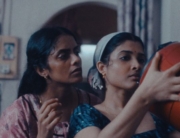
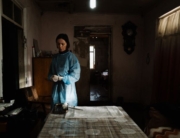
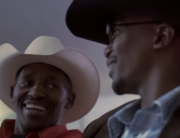
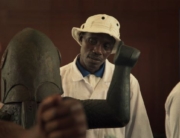

Leave A Comment